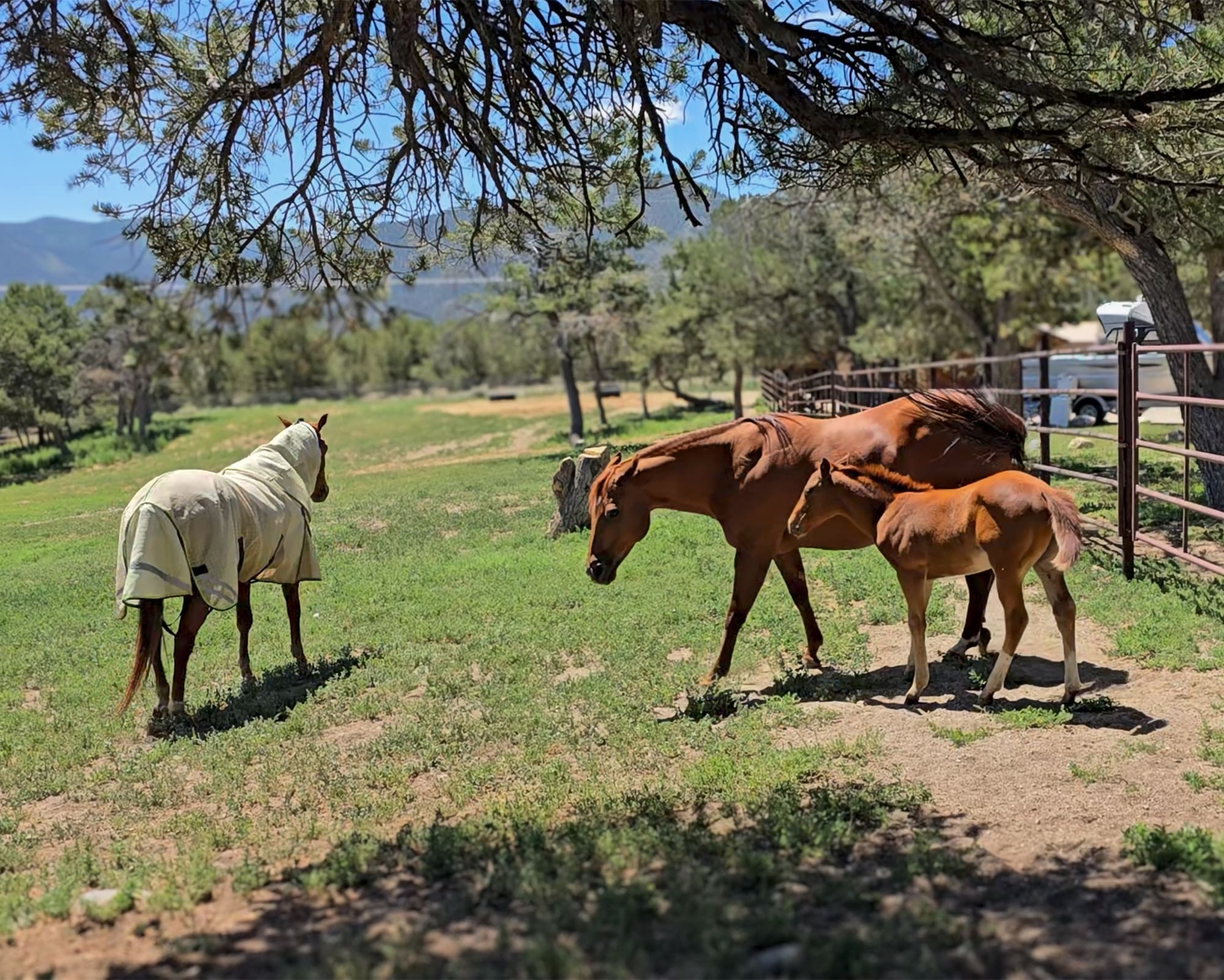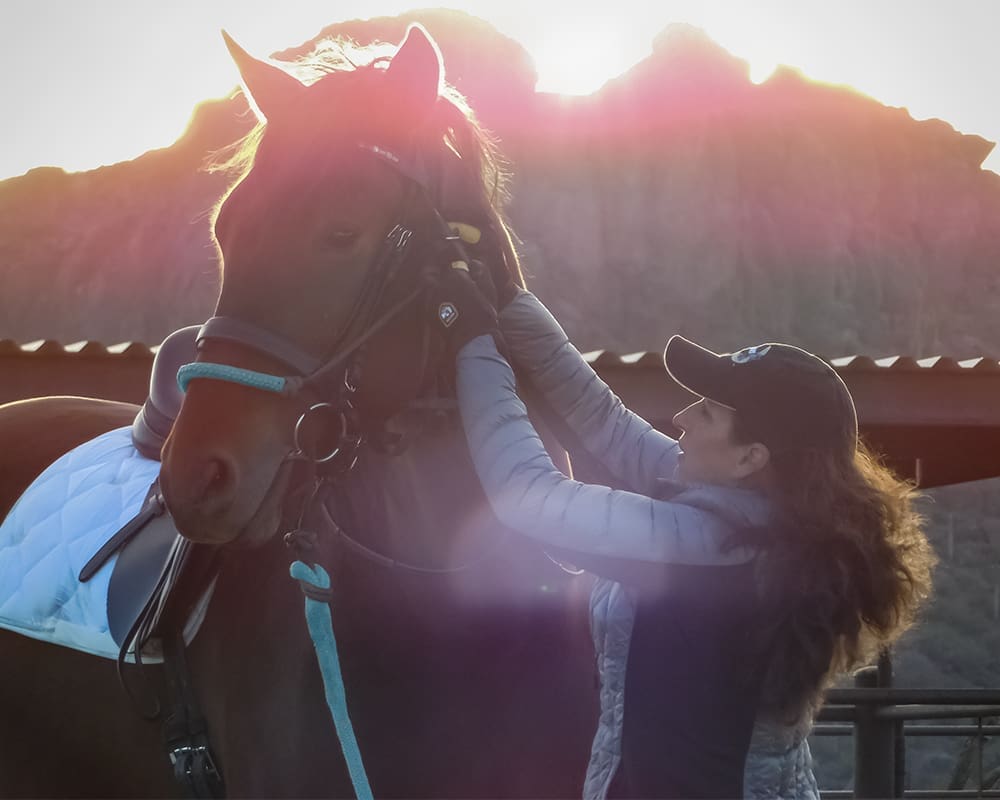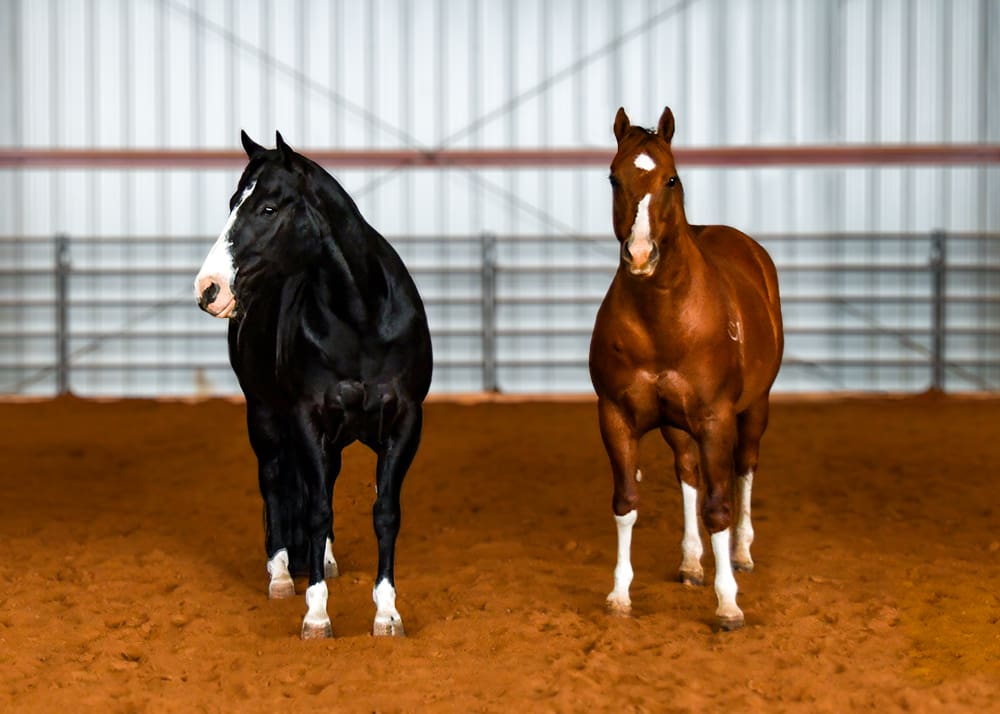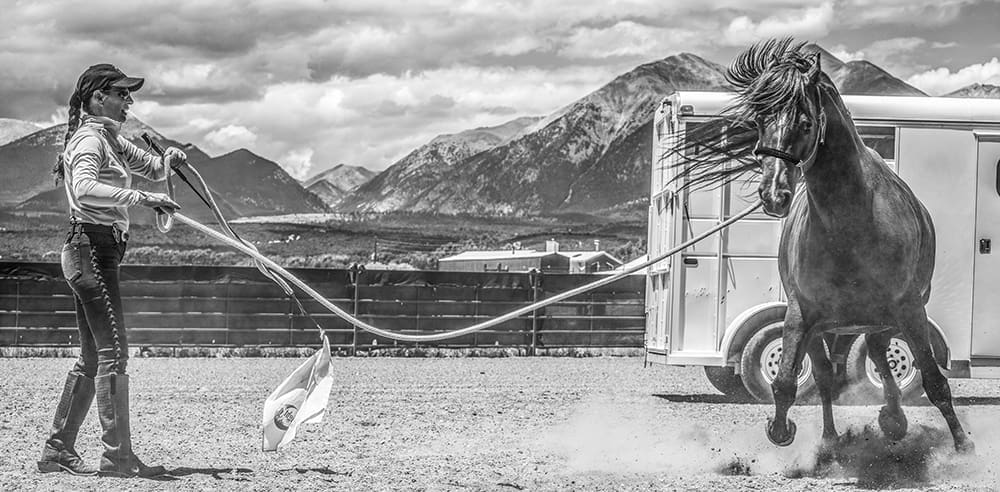
You have future goals to accomplish with your horse, but you know you’re not ready yet. Equestrian sports require a long-term commitment and often the journey takes us places we didn’t imagine when we started.
For many equestrians, taking on a new challenge like competing in a local horse show or attending a group trail ride is an appealing prospect. It seems like almost every day I hear from one of my online coaching students about changing disciplines—trail riding to ranch horse or dressage to reining.
I often work with people who recently acquired a new horse, but the relationship isn’t headed in the right direction. Sometimes it’s a well-trained horse that performed admirably when purchased, but a month or two after getting the horse home, it’s falling apart. Or they have adopted a horse with no known training history, and are trying to decipher what they have to work with to give the horse a great future.
This journey will require building new skills, but which ones? You and your horse will need lots of practice, but on what? You must keep your eyes on the prize, yet be willing to “go back to basics” to fill in holes that may be missing either in your horse’s training and experience, or your own.
First, take my quiz to find out your horse’s training level here to evaluate where you and your horse are currently so you can figure out what “holes” you need to fill in.
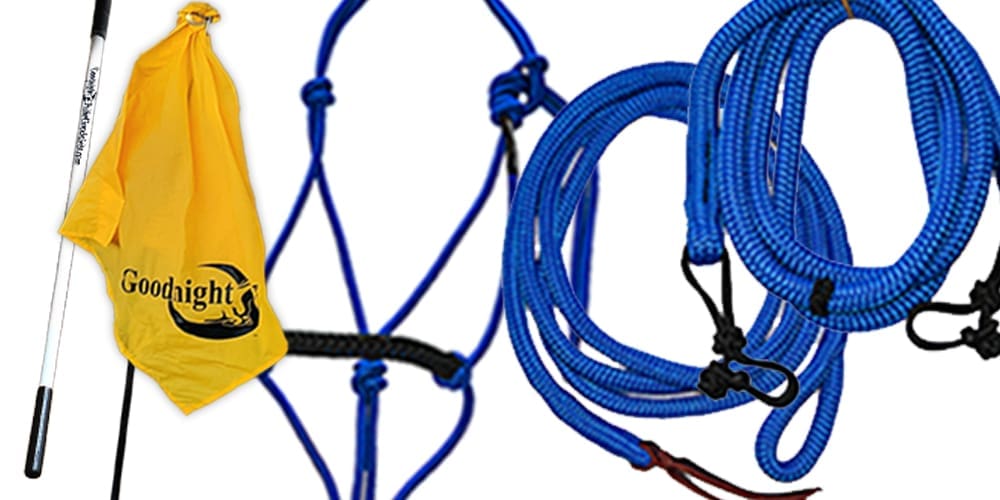
Step 1: Find the Holes
- Define the performance problem or the new skills required: What abilities will both horse and rider need, and what currently stands in the way of success? This list could be long but be thorough and break it down to its smallest components. This will be your road map.
- Does the horse lack any of the skills he’ll need to accomplish your goal? Do you lack any of the necessary riding skills? Ideally, one of you already does—it can be difficult, if not impossible, to learn a new skill properly while also teaching it to your horse (not mention unfair to the horse). It may be necessary to get help from an experienced trainer to fill in these gaps.
- Does the horse need the help of a more advanced rider or trainer to perform the required skills? The horse may have some training, but is still green, and requires a lot of support from an expert rider to perform the skills. In some cases, the horse has performance problems that are 100% rider-induced.
No equestrian enjoys discovering that about themselves, but it’s extremely important for your horse and yourself to acknowledge when you are the root of the issue before you can fix it and move forward.
- Does the horse have the skills he needs, but lacks the “life skills” that come with experience traveling to and performing at new places? Maybe your horse has anxiety or herd-bound issues that lead to mental/emotional meltdowns? All the training for physical skills and maneuvers in the world will not help if what the horse lacks is worldly experience, confidence leaving the herd, and the ability to be calm and focused in brand new places.
The horse may need road experience, or actual mental/emotional training to develop tools for dealing with its anxiety—like lowering the head, disengaging hindquarters, or the 3-step circle to calm down.
- What is the state of the horse’s attitude—particularly as it relates to its ground manners and its willingness? Does the horse accept the authority of the person both on the ground and under-saddle? The horse’s attitude and willingness can be a “canary in the coalmine” of more serious underlying problems.
Sometimes a horse’s poor attitude stems from a failure of leadership on the part of the human, or confusion from conflicting signals. If the attitude problem is addressed, but not the failure of leadership or communication, things may get worse.
A greener horse with little foundational training who is being asked to do things it cannot understand can understandably become frustrated and angry. Things aren’t always as they appear on the surface, and usually in cases like this, the horse’s attitude will turn around dramatically in the right hands.
Step 2: Determine Root Causes
- First, rule out physical problems, soreness and lameness with a qualified equine vet and the assistance of an expert farrier. Also consider equipment failures, like the wrong bit, an ill-fitting saddle, or an improperly adjusted noseband. You may need expert help with this too.
The overwhelming majority of so-called “training problems” in horses are a result of physical pain, mental stress (like fear, anxiety and confusion), or poorly fitting/adjusted equipment.
- Are any of the problems stemming from the horse’s disobedient behavior or from a lack of leadership from the person? Or is it a lack of education, a lack of seasoning in the horse (worldly experience), or all the above?
- What can the horse’s issues be traced back to? For example, if the horse resists speeding up into a lope, and/or staying in the lope, ask yourself—does he move freely forward at a trot? At a walk? When you’re leading him? Or does he stop, slow, or resist whenever he wants to? Does the horse respond to light cues from the rider the first time he is asked? Is the horse soft and relaxed throughout the body? Is there anxiety, tension, or confusion present?
The answers to these questions may lead you to revisiting very basic skills with your horse to fill these holes in his foundation. They may seem inconsequential, but they prepare your horse for when you ask for more from him.
- Is the horse especially anxious, high-headed, agitated, or on-the-muscle? Anxious or resistant behavior in horses is often the result of the horse’s simple lack of understanding of what the right answer is. We must consider if the horse’s confusion is coming from the rider giving conflicting signals, from a lack of foundational training in the horse, or both. Usually fixing the rider fixes the horse, but sometimes the horse just needs education.
- Spooking/fearful behavior is often a result of mishandling or incompetence from the rider, and not a problem inherent in the horse. The horse’s lack of confidence is directly related to the rider, but presents as spooking at everything under the sun (or spooking more and more often). Some horses will lose significant confidence when their rider/handler is passive and lacks leadership. Particularly when the horse was previously accustomed to strong leadership.
Often, fearful behavior disappears entirely when the underlying issues are resolved. These issues commonly include:
- Neglecting to set clear boundaries with the horse
- Sending confusing or conflicting signals (like cueing the horse to move forward, then pulling on the reins)
- Inconsistent reinforcement of cues
- Unknowingly reinforcing disobedience from the horse
- Punishing the horse when the rider makes mistakes (it happens more often than you might think)
- The rider or handler’s lack of awareness of the horse
Why does resolving these kinds of problems help get rid of a horse’s over-the-top fearful behavior? Because they can rely on their person to take care of them and keep them safe. Trust from a horse must be earned over time, and it can be lost in a heartbeat. Calm, focused and obedient horses generally have great confidence and huge faith in their human partners—a major compliment to you!
- What discipline-specific technical skills are lacking from both horse and rider that are needed to accomplish the goal? Is a higher level of training needed? Together or separately? If you both have the basic skills in place, you can probably gain more skill together. Or if one of you has the skills and one doesn’t (either the horse is experienced and the rider is green, or vice versa). However, if both are lacking in skills, you should consider separate training with an expert in the discipline.
- Have the horse and rider had enough practice to own their skills, and experience performing those skills in different locations? Horses are quite location-specific in what they learn (they remember what they did at that specific place). A horse can perform the highest levels at home (in the place it’s accustomed to, learned the skills and has practiced them many times), but when you haul to a new place for the first time… the horse seems as if he knows nothing. Learning to perform well in all kinds of locations and situations—familiar and unknown, under pressure at a competition or not—only happens by taking the horse places and gaining experience (or seasoning).

Ready to Ship Today! (719) 530-0531
Step 3: Craft a Plan to Fill the Holes
- Does the horse need to go to a trainer to accomplish this?
- Does the rider need to increase skills on another horse or work with a trainer and take lessons on a school horse?
- Address fundamental skills. Every partnership at any training level stands to benefit from revisiting the basics. Do structured groundwork that gives you authority, develops a line of communication with the horse, and gives the horse a reason to trust you. (My Interactive Academy Membership is an online coaching program that gives you a structured assessment of fundamentals, a plan to move forward, and personalized coaching from me every step of the way.)
- 10,000 hours of practice may be needed to achieve mastery. Start now and break it down into small, achievable steps. Remember, only perfect practice makes perfect.
- Need more seasoning? Break it down into its smallest components—trailering, stalling, hanging out at an event but not competing, riding in new and different arenas, getting used to being around strange horses, practicing performance skills in new locations, riding away from the herd or having more alone time with your horse.
- Set 3 specific, attainable, measurable goals and reassess them every month.
- Finally, give it time! My horse, Dually, was 6 when I got him and finished in reining, heading, heeling, and reined cow horse—he was a powerhouse! I had been a professional rider for three decades, but it still took us two full years to truly come together as a team and be able to perform at our highest level together. His training was so extensive and so specific that it took me time to find all the buttons and for us to adjust to each other’s nuances. Be patient with yourself and your horse—none of this comes overnight.
Keep in mind that anyone who handles or rides a horse either trains or untrains that horse with every interaction they have—and that includes you! Horses are extremely quick learners, and sometimes we inadvertently teach the horse the wrong things. For instance, if a horse bucks, and the first thing the rider does is get off and put them away, the horse has learned that bucking will get them out of work. Or if a horse throws a fit walking to a trailer, and the handler turns it around to circle and try again, the horse learns that a tantrum gets them away from the trailer (even if it’s only for a moment).
Building the ultimate relationship with your horse, setting and reaching your goals, mastering new skills, and going on adventures together can be exhilarating and fulfilling. My greatest personal satisfaction in horsemanship comes from imagining the best future for a horse, developing that horse to its greatest potential, then finding a deserving rider for that horse. Even when it means letting go of a great horse, I love to see a horse launch into a successful career in the hands of a loving and devoted rider.
My greatest professional satisfaction comes from pinpointing and improving a simple dynamic between a horse and rider—so the horse can free up and perform better, and the horse and rider can forge a deeper connection. In most cases, this opens the door to new achievements for the pair, and the rider gains a new appreciation for their horse.
I believe that a good steward of horses will always leave a horse better off than they found it—healthier, happier, and valued. Regardless of what our goals are, we owe it to our horses to provide them with the skills and positive experiences they need to be safe, reliable, willing, and eager-to-please partners. This basic premise plays a significant role in securing a horse’s future, so no matter where their path leads them we have provided them with the best chance of having a good future.

